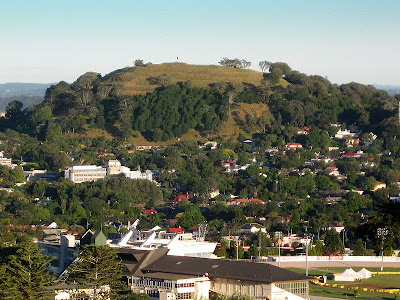Main reason I headed out to MOTAT at Western Springs yesterday was to view the "I am the Last Tram" exhibition. A combination of trams and Auckland social history should be, I reckoned, quite interesting.
Took a while to find the exhibition, though. It ended up being in the middle of one of the exhibition halls, with entry through to it via another exhibition on the 1930s-1940s. Which was where this poster came from (apologies for the blurred shot). An interesting way to tell the middle-of-the-day shoppers to leave the rush-hour tram traffic to the workers. Rush-hour these days, though, starts at 3pm, with a busload of school pupils almost all yelling at each other at the top of their lungs. That "sweet and kind" lady would have even more incentive to head home smartly these days, with that commotion ...
Again, from the 1930s-1940s exhibition -- an iron lung, built at Auckland Hospital workshops, designed by the hospital's chief engineer Fred Jacobs, following a polio outbreak in the mid 1930s. The interpretive sign along with it says it may be the oldest surviving iron lung in New Zealand.
Some info on rationing was displayed here as well.
Then, I turned a corner, and -- ah ha!
A small space for the exhibition, I thought. Almost along the lines of the Auckland War Memorial Museum's "Centennial Street".
More views of the last tram to run in Auckland in the 1950s.
The exhibition aims to give folks a feel for the 1950s, when suburbia was just starting to pre-dominate (so they said), and when the motor car replaced the dear old trams. They had a selection of facades of noted Auckland central city buildings, along with a small display of what went on inside in each one. Nice job with the facades, quite impressively done. This one is the NZ Herald offices.
Example of an old newspaper printing press.
Smith and Caughey's, harking back to the Lippincott design.
This display window is quite close to the ones the store still has today.
What the best dressed 1950s manequin was wearing then.
This corner shop in the exhibition has an "open" sign in the window (it should have been open), but it wasn't, not yesterday. Notb enough customers through the exhibit, so the folks at the admittance office at the front of MOTAT told me. There's supposed to be souvenirs of the exhibit on sale in there. Well, no -- just DVDs of general tram stuff and the like. I'd have liked to have had a brochure on the exhibit, with the signage info, to take away, but ...
Some interesting stuff in the windows, though.
Non-PC golliwogs! And one flashing her knickers to all and sundry! (You may guess that I had a bit of an Enid Blyton nostalgia moment at this point. Not about the knickers, though -- I'm sure Enid wasn't like that.)
This is how folks satisfied that choclate craving out in the street in those days. The vending machine, though, came from the 1930s, not the '50s.
What intrigued me about this window was the Harbour Bridge toll tickets sign. The Last Tram (1956) would never have passed these (1959) by in reality.
Fun with digicams. A shot with the flash on ...
A shot with no flash.
The display inside even had something of the gorgeous Indian decorations of the real; movie palace in midtown Auckland, the Mighty Civic.
Plus, an early projector.
Somewhere along the "street" -- a post box that looks a darned sight more solid than the ones we have today. Not sure about more secure, though. Padlock might not have taken a crim long to handle, and the slugs would have had a lovely time ...
I turned another corner -- and suddenly I'm not in the exhibition anymore. Mind you, this 1909 photo of a Labour Day float by the Auckland Bootmaker's Union caught my eye.
So, that was the exhibition. I'm not exactly disappointed -- main things are that I wish I had something to take away as a souvenir booklet or some such, and that the exhibit was a bit larger. It's obvious, though, that as usual a lot of hard work went into the preparation. Well worth a look around.























































